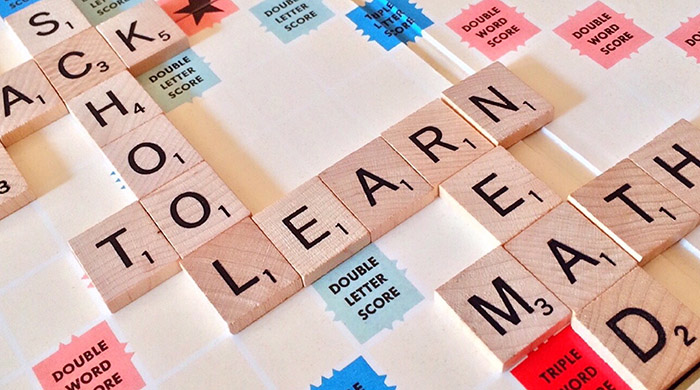Study: Evidence-based practices for boosting math problem skills not as effective with English language learners

LAWRENCE — Every year, American students score poorly in international math achievement comparisons. Interventions to help boost math skills have been found effective in some cases for English-dominant speaking students, but a new study co-written by a University of Kansas researcher has found that evidence-based methods to boost problem-solving skills are not as effective in helping students learning English as a second language at risk for math difficulties. The results also suggest math education could benefit from focusing more on problem-solving skills and reading comprehension.
 Researchers conducted a randomized control treatment study with 142 third-graders, half of them Hispanic students learning English as a second language and half monolingual English speakers. Researchers found a generative approach to problem-solving benefited ELL and monolingual students who were not at risk of math difficulties nearly equally, but ELL students at risk of such issues struggled to solve the problems, even with the intervention. The study tested methods that have been shown to have success in helping English-dominant speaking students boost math achievement.
Researchers conducted a randomized control treatment study with 142 third-graders, half of them Hispanic students learning English as a second language and half monolingual English speakers. Researchers found a generative approach to problem-solving benefited ELL and monolingual students who were not at risk of math difficulties nearly equally, but ELL students at risk of such issues struggled to solve the problems, even with the intervention. The study tested methods that have been shown to have success in helping English-dominant speaking students boost math achievement.
“We have to find out if these evidence-based measures work for different populations. For years, we’ve had teachers using these methods and being told or assuming the medicine works for everyone,” said Michael Orosco, associate professor of educational psychology at KU and one of the study’s authors.
Orosco co-wrote the study with H.L. Swanson and J.K. Kong of the University of New Mexico and A.S. Moran of the University of California-Santa Barbara. It is forthcoming in the journal Learning Disabilities Research and Practice.
Students in the study were randomly assigned to one of four groups to work to solve common word problems such as, “Darren found 15 pine cones. He threw 5 pinecones back. Darren found 1 pine cone that was red. How many pine cones did Darren keep?” They tested generative learning, a long-used method of bolstering comprehension of text. Students were assigned to groups to either restate the question, restate the question and relevant propositions, restate the question, relevant and irrelevant propositions; or a control condition with no intervention. Restating of the question, or generative learning, was tested to see if it could be effective in helping the at-risk ELL students.
Results from across the groups showed restating of the problem in which they identified relevant or irrelevant information — i.e., the red pine cone — or paraphrasing the question in their own words, generally helped both ELL and monolingual students not at risk of math difficulties. However, ELL students at risk of developing math difficulties did not show as much improvement.
“We found for the most part, you can teach these strategies to kids with math difficulties. But the kids who are English language learners tended to struggle,” Orosco said. “They had a difficult time parsing out the information that was irrelevant.”
The findings indicate that students learning a second language tend to struggle with math word problems as they not only have to solve a math problem, they have to decode a language they are learning to do so, and irrelevant information, new vocabulary and concepts they struggle to comprehend all make that more difficult.
The researchers focused on word problems in mathematics, as they start early in math curriculum, often around second grade, and persist throughout schooling. Language barriers can lead to poor math achievement, anxiety toward math and educators believing a student struggles with the subject when the difficulty is actually rooted in understanding language or in reading. That often results in long-term problems in schooling.
“According to the National Center for Education Statistics, approximately 9 percent of the nonELL student population scored below basic level in math skills, whereas 42 percent of ELL fourth-graders scored below basic level,” the authors wrote. “By eighth grade, this gap of scoring below basic level widens to approximately 72 percent of ELL students scoring below the basic level. This poor math achievement places many ELLs at risk for long-term math difficulties.”
The study is one of the first to evaluate whether generative learning strategies are effective with English language learners. The question is vital, as America’s student population is diversifying and English language learners are the fastest-growing segment of the school-age public education population, Orosco said.
The findings showed that monolingual students not at risk of math difficulties did well in identifying relevant information, but not quite as well at restating the problem. English language learners did well with identifying relevant information but struggled when presented with irrelevant information.
“It helped them practice their language development and sort out the components of the problem,” Orosco said of identifying relevant information. “Word problems are in their curriculums the rest of their student lives. When solving a problem, you have to determine what information is relevant and what is not. You have to be able to push the noise aside.”
The results suggest that teachers would serve students greatly by teaching problem-solving skills, not by focusing on whether they got the correct answer but how to get to the correct answer, Orosco said, as well as putting more focus on reading comprehension. People might not normally think of reading comprehension as a necessary skill in math, but this and other studies show its importance, especially for English language learners. Teacher preparation programs can play a role as well by preparing educators who can help students learn problem-solving skills and who understand the role English comprehension plays in mathematics.
“We have to teach our future teachers better problem-solving skills, but we also need to consider reading and comprehension skills, especially with English language learners, because they are learning a second language and math at the same time,” Orosco said. “We also need to teach reading comprehension more within math overall, as math is dependent on understanding linguistic information. We need to continue to find out what math practices work with scientific-based research in education.”